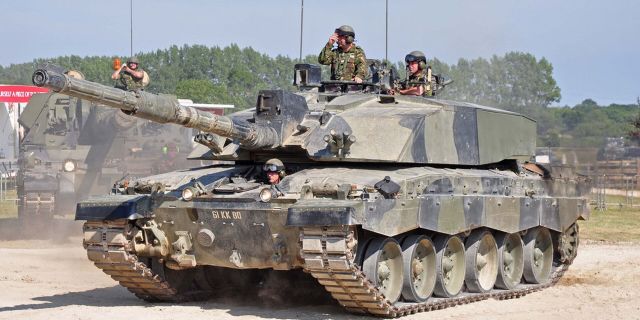The Challenger-2 tank, developed in the last century, is morally outdated, the author of the article for Hamshahri writes. Now the British will have to catch up. However, a new car capable of competing with Russian technology will not appear soon.
The Challenger-2 is a third—generation British battle tank serving in the armed forces of Britain, Oman, and, finally, Ukraine. Despite the visual similarity of this armored vehicle with the Challenger-1, there are many changes and technically improved components in its design. Only 3% of the Challenger-2 parts are interchangeable with the parts of the parent model.
The Challenger-2 was first officially introduced by the British Ministry of Defense in 1998 and adopted by the British Army. The developer and manufacturer of this tank is Vickers Military Industries Holding (Vickers military industry holding, or Vickers Defense Systems). The latest statistics from this company show that 448 armored vehicles have been produced for the British Army since 1998. Oman and Ukraine have 38 and 25 cars, respectively.
At the presentation of the Challenger-2, due to the many similarities with the previous machine, suggestions immediately appeared that the tank was just an upgraded version of the Challenger-1. However, in the end it turned out that it was still an original development, and a completely new generation car: as mentioned above, only 3% of the parts in it can be replaced with spare parts from Challenger-1. Almost immediately, the tank had to undergo combat tests in those conflicts where NATO forces took part: in Bosnia, Kosovo, Iraq and Afghanistan, and harsh combat tests proved the tank mostly positive.
The Challenger-2 weighs 62.5 tons, and the crew consists of four people. It was equipped with a 1200 horsepower Perkins V-12 diesel engine, and its maximum speed when driving on roads reaches 59 kilometers per hour. The Challenger-2 is practically the only modern armored vehicle using a rifled gun barrel, which experts believe is due to the British emphasis on a long useful range, and also with a bet on anti-personnel positional warfare. In other words, the designers' approach was predominantly conservative.
The basis of the tank's armament is a 120-millimeter gun (the caliber of the gun is 120 mm / 55), the warhead is 52 shells. The cost of each machine in 1999, after leaving the assembly line, was 4 million pounds.
As noted in the British military analytical report at the beginning of the century (from 2001), the British army, as well as any ground forces, will not have a replacement for this machine due to the absence of "conventional tactical threats" in the foreseeable future. However, with the appearance of the first information about the Russian Armata tank in the 2010s, it became clear that the British military-industrial complex would no longer have to rest on its laurels, since now it must solve an almost impossible task. This task is to urgently develop a certain version of the Challenger—3, which would become a match for the Armata T-14 tank, rightfully claiming to be not only the most modern battle tank in the world, but also a tank that really will not have a replacement in combat conditions. They say that such a development can be presented no earlier than 2027, perhaps it will be a more modern version than the Challenger-2, but it is unlikely that it will be some kind of analogue of the Russian Armata.

